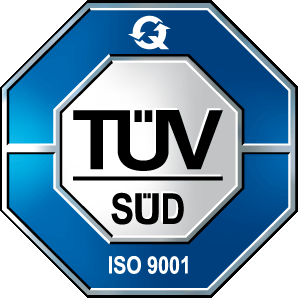It is best to start building the sponsor’s active attitude towards our project already in the initialization phase. Then, as a project manager, we have a unique moment of making a first, positive impression on our sponsor and creating the ground for a healthy, fruitful relationship. Then we can start to properly fine-tune this cooperation by involving our sponsor in joint initiation work.
It is important to establish general principles of cooperation and collect information about the degree of personal involvement in the project expected by the sponsor when starting the project.
We know that projects are unique. There will be those in which without strong commitment from the project sponsor, we will not be able to complete the planned work. There will also be cases in which the sponsor openly tells us that he has a project manager to “take his mind off” the project and run it completely independently, reporting only the status on a set regular basis. It may also happen that we will be running a project in which the sponsor turns out to be too active, assuming (consciously or not) our role as project manager. It is the responsibility of the project manager to properly assess the optimal level of commitment from our sponsor and try to achieve it.
I deliberately write here about making an attempt. We know that in the relationship with the sponsor, we are not the ones who impose or determine the rules of the game. However, we can skillfully exert influence and convincingly encourage our sponsor to adopt the expected attitude. The key to this, of course, is proper communication and analysis of information. The sponsor is one of the most important stakeholders of our project. As with other stakeholders, the key to success in this relationship is its proper planning and consistent maintenance.
Therefore, it is worth answering the question at the very beginning of what kind of sponsor involvement I need to run the project successfully. Is my position and authority in the organization so developed that I will not expect strong, regular support from the sponsor? Or maybe without his support it will be difficult for me to interest anyone in the organization in the project, let alone invite them to cooperate? In what aspects of the project will I need the sponsor’s support? Will he be a technical and domain authority for me? Or will he act as a prestigious ambassador for the project? Will I need it to acquire valuable project management team members from other departments of the organization? How often will I need his decisions? Do I expect his support in planning the project? How will the environment in which the project will be implemented determine my need to engage a sponsor? It’s a good idea to start by creating an “ideal” profile for our project and the sponsor’s environment. Let us also remember that, like many other elements in the project, our “demand” for the sponsor’s support may change. Therefore, it is good to be prepared for various scenarios and to inform the sponsor that there will be dynamics in this area as well.
Having an idea of our “ideal” sponsor for this particular project, we should prepare to convincingly present our expectations to the actual sponsor. And here it will be very helpful to collect information and observations about our sponsor’s preferred style of operation. To what extent does it correspond to our ideal? This is a typical analysis of the discrepancy between the expected state and reality. Our further strategy of influencing the sponsor will depend on its results. If the comparison results are favorable, we should prepare a strategy to influence the sponsor to maintain the attitude we expect. If the discrepancies between the expected and actual attitudes are significant, we should develop a strategy to influence the behavior of our sponsor.
We have already launched the functionality related to commenting on our entries. I encourage you to share with me your observations on building a relationship with a sponsor. Have you ever actively built a relationship with your sponsor? What results did you achieve? What actions brought the expected results? What would you warn other project managers against because it clearly didn’t work?









